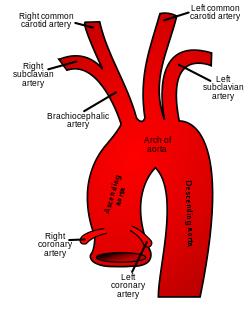| Dysphagia lusoria | |
|---|---|
 | |
| The right subclavian artery is involved in this condition |
Dysphagia lusoria (or Bayford-Autenrieth dysphagia) is an abnormal condition characterized by difficulty in swallowing caused by an aberrant right subclavian artery. It was discovered by David Bayford in 1761 and first reported in a paper by the same in 1787. [1]